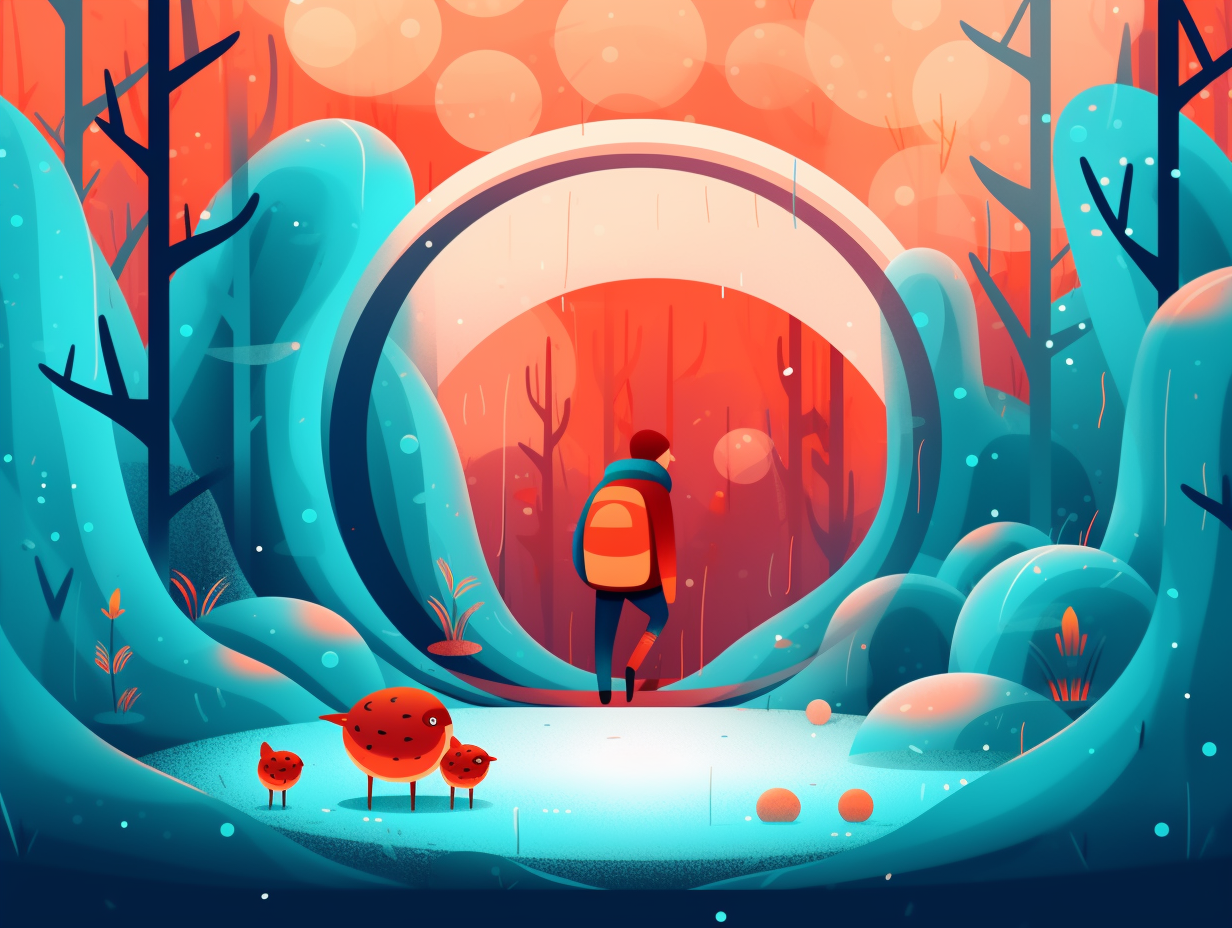Discover the Wonders of Life: Top 12 Unbelievable Biology Fun Facts You Never Knew!

1. Cats: Meteor-Surviving Ancestors
Cats: the original cat-astrophe survivors! Turns out, our feline friends' early ancestors were not just chasing rats and lazing around Ancient Egypt; they were waiting in the wings as the dinosaurs took their final bow due to a meteor 66 million years ago: The rise of mammalian dominance allowed miacids - the ancient grand-kitties to modern cats - to creep their way into the world 42 million years ago rather than just the 30 million years we once thought. So, give them a thanks-for-not-being-a-dinosaur treat!
Source => pbs.org
2. Prairie Dogs: Acrobatic Communicators
Prairie dogs: aspiring acrobats or expert town criers? You decide! These adorable critters have a signature move that's part thrilling cabaret, part party line: the "jump-yip". In this high-stakes number, they leap off their front feet, stretch sky-high, and belt out a two-toned operatic bark. The plot twist? It's all about communication - whether it's announcing a snake in their midst, frantically dialing 911 for a noisy intruder, or merely singing the all-clear after a heated territory tiff.
Source => prairiedoghoogland.com

Did you know salamanders are slimy superstars that can regenerate lost limbs, organs, and tissues? Discover their amazing abilities in our fun facts about cells!
=> Fun Facts about Cells
3. Neuromuscular System: Groovy Teamwork
Whoever said "there's no 'I' in teamwork" clearly didn't study the human body: Our neuromuscular system, a squad comprising the brain, nerves, and about 600 skeletal muscles, unites into an all-star trio of skeletal, smooth, and cardiac muscle types to put the groove in our move.
Source => betterhealth.vic.gov.au
4. Bone Healing: Fracture Lemonade
When life gives you fractures, your bones make lemonade: through a four-step process called bone healing, your body is able to knit together broken bone fragments by forming a soft callus of fibers and cartilage before eventually reshaping it into strong new bone that matches the original shape and size.
Source => kids.frontiersin.org

5. Microbes: Masters of Extreme Heat
You might think a sauna is steamy, but it's got nothing on these underwater hotspots: Microbes such as archaea and bacteria have been found surviving in hydrothermal vents at the ocean's depths, where temperatures can reach a scorching 400˚C! Scientists at the UW are studying these extremophiles in their journey to decipher how life could potentially exist on other planetary bodies.
Source => depts.washington.edu
6. Mighty Mitochondria: Powerful Secrets
They may be tiny, but they pack a punch like Popeye after a can of spinach: Mitochondria are the powerhouses that keep our cells running, producing energy in the form of ATP and maintaining calcium balance, but their true capabilities remain a mystery! Dysfunction in these little dynamos is connected to ageing, cancer, diabetes, Parkinson's, and neurodegeneration.
Source => ncbi.nlm.nih.gov
7. Identical vs Fraternal Twins: Not Created Equal
Move over, Parent Trap: there's a real-life twin scenario that's twice the fun! Identical twins are basically nature's real-life cloning experiment, and they've got the matching DNA to prove it: These remarkable doppelgängers result from a single egg fertilized by a single sperm that splits into two, sharing identical genomes. However, their fraternal counterparts only share half their genetic blueprints, more like regular siblings, as they arise from two separate eggs meeting two distinct sperm during the same pregnancy. So while twinning might be winning, remember that not all twins are created equal!
Source => genome.gov
8. Chicken-Human Gene Connection: A Clucky Match
Why did the chicken cross the genetic road? To prove it shares 60% of its genes with humans: Despite having a reduced number of DNA repeats and pseudogenes, chickens have about 20,000-23,000 genes in 1 billion DNA base pairs, remarkably close to the 20,000-25,000 genes in our 2.8 billion DNA base pairs. But, make no mistake, human and chicken genes are only 75% identical on average, compared to an 88% identical match between humans and rodents.
Source => genome.gov
9. Wrinkled Fingers: Enhanced Underwater Grips
Finger-lickin' good news for underwater chicken thieves: Wrinkling of fingers after soaking in water actually improves grip performance on wet or submerged objects, thanks to nerves that constrict blood vessels beneath the skin, making for a speedier aquatic heist with wrinkled fingertips.
Source => science.org

10. Sleepy Insects: Fascinating Slumber Patterns
While paper wasps, cockroaches, and praying mantises catch up on some well-deserved Zzz's and fruit flies doze off to dream of finally sneaking a free sip on your sweet beverage, trust us, not all insects are part of this slumber party: In fact, some insects, including the aforementioned party crashers, have specific sleep patterns to follow, with fruit flies' sleep even resembling that of mammals as they respond to sleep-inducing chemicals and caffeine – a captivating discovery made by biologists like Barrett Klein from the University of Wisconsin, who continues to unravel the mysteries of insect siestas.
Source => nationalgeographic.com
11. Giraffe Necks: Shared Vertebra Number Surprise
Having a giraffe of a time with their sky-high snack bars, one can't help but wonder if giraffes have a vertebra collection that rivals a mad scientist's laboratory: The surprising truth is that giraffes and humans share the same number of vertebrae in their necks – a mere seven! The not-so-secret recipe to their impressive necks lies in each vertebra being super-sized, reaching an astounding 10 inches in length and culminating in a 6-foot-long neck perfect for reaching those top-shelf treats.
Source => savegiraffesnow.org
12. Earthworms: Rainstorm Migrators and Snorkelers
Earthworms: aquatic superheroes or clever commuters? These squiggly wrigglers don't just come up for air during a rainfall to show off their snorkeling skills. It turns out Earthworms can actually survive several days submerged in water, breathing through their skin: The real reason behind their rainstorm rendezvous is to embark on quick and easy migrations, while occasionally dodging mole foes who share a penchant for recreating the rhythmic pitter-patter of raindrops.
Source => scientificamerican.com
Related Fun Facts




















